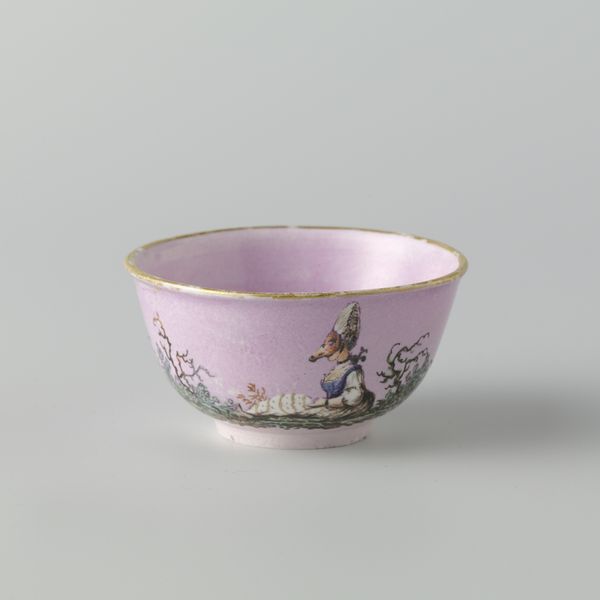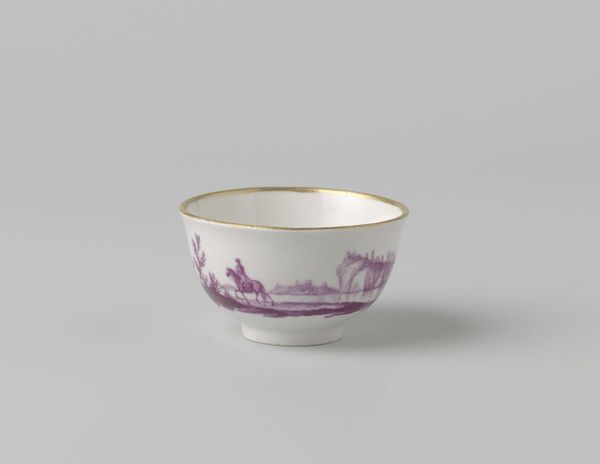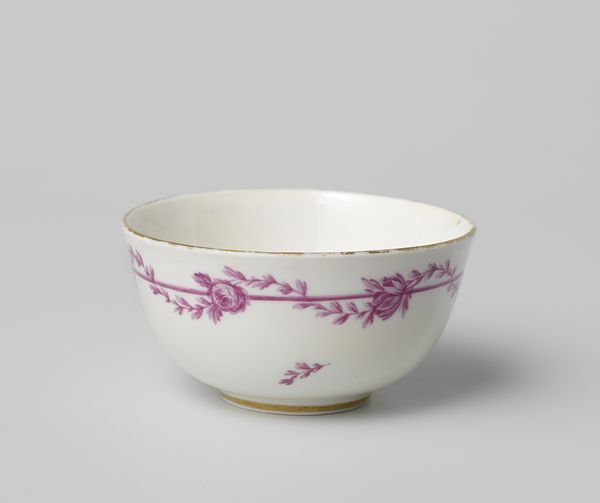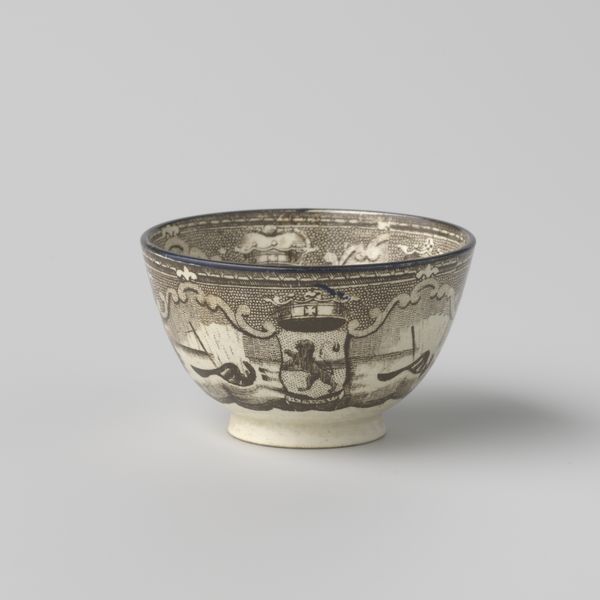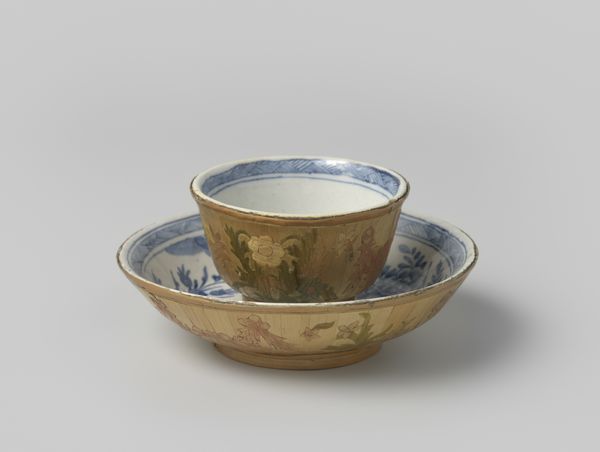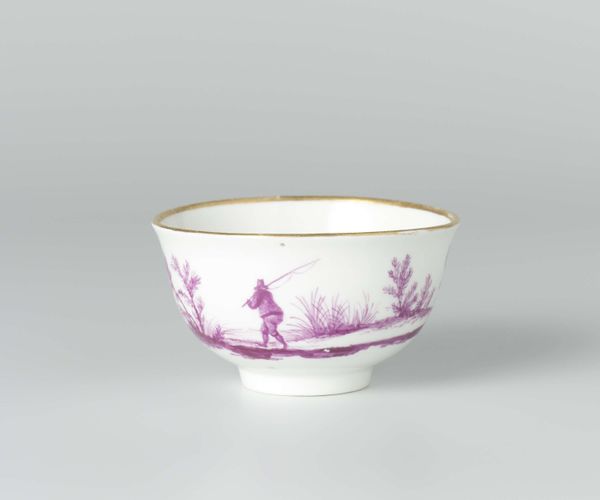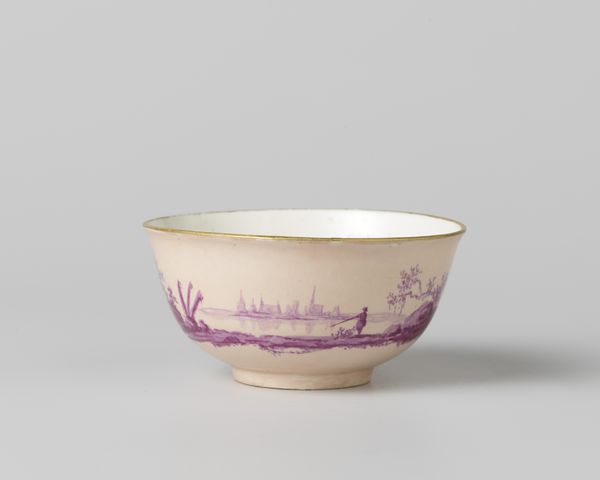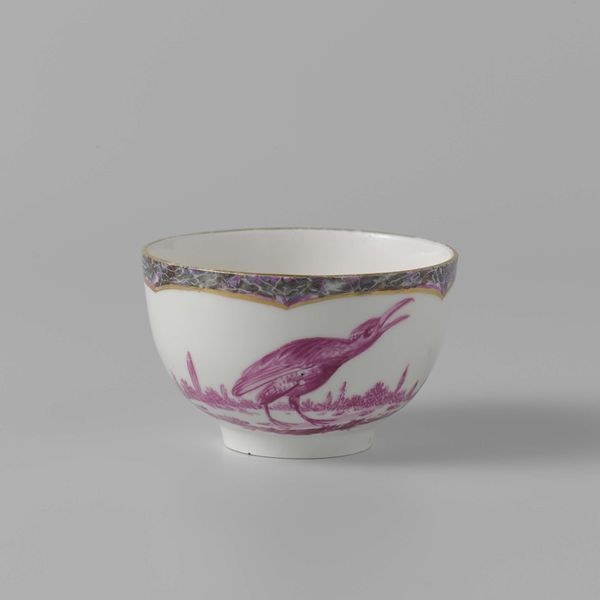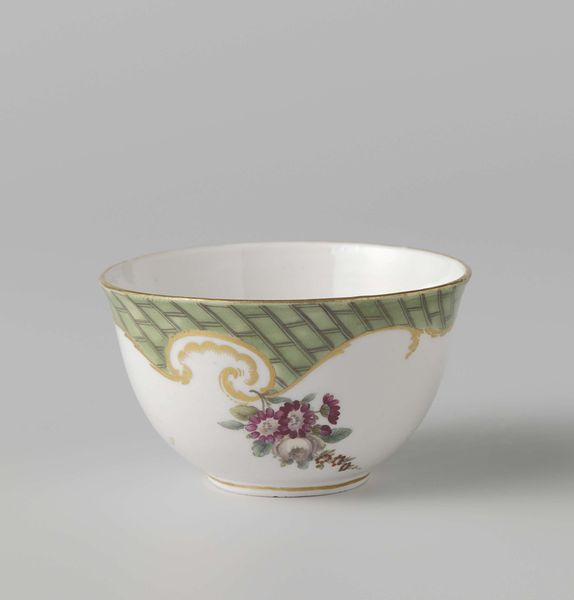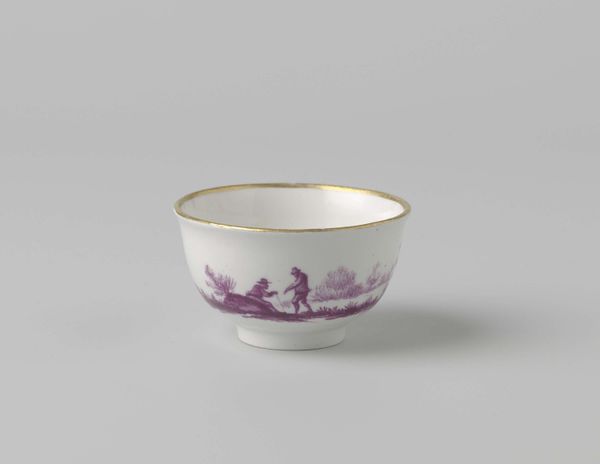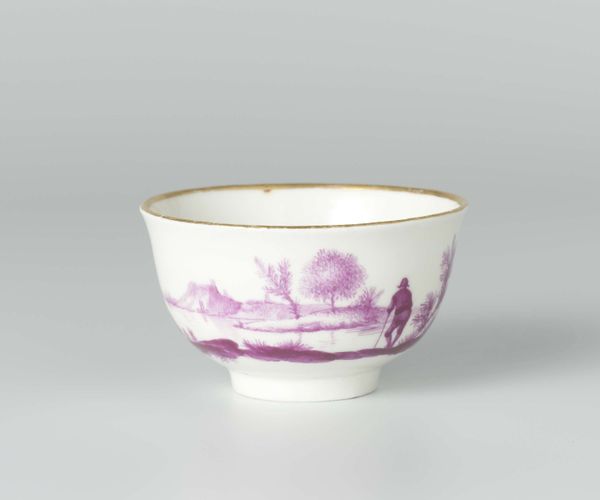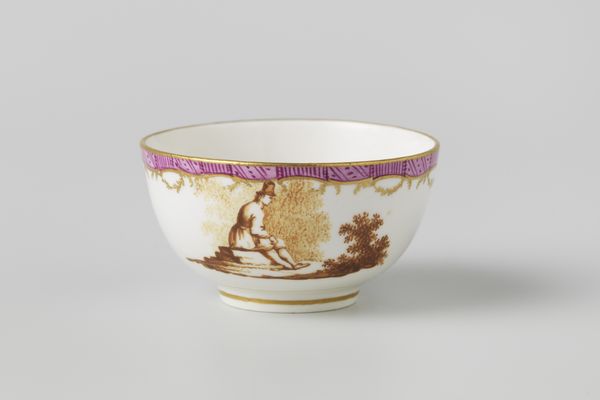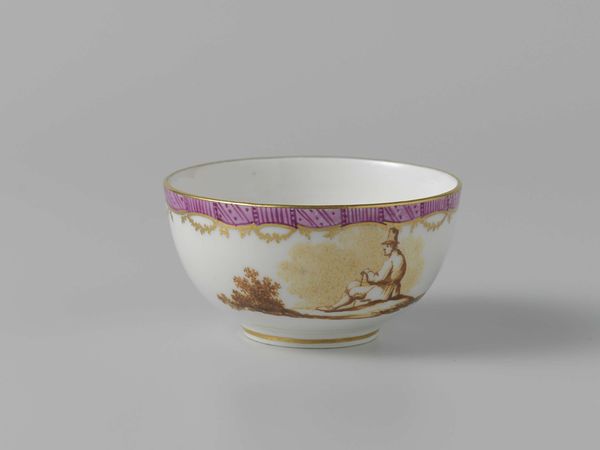
Copyright: Rijks Museum: Open Domain
Editor: This is part of a coffee and tea service crafted between 1774 and 1778 in Loosdrecht. It's ceramic, and the decorations are delicately rendered in a lilac hue. I find it charmingly quaint, but the somewhat monochrome palette feels a bit limiting. What formal elements stand out to you? Curator: Immediately, I note the elegant simplicity of its form. Observe the careful balance between the rounded bowl and the small foot, creating a harmonious relationship between stability and lightness. The smooth surface serves as a canvas for the painted landscape, drawn using delicate strokes that exemplify the Rococo penchant for asymmetry and ornamentation. Do you notice the strategic placement of the painted scene in relation to the blank space? Editor: Yes, there's a definite contrast between the detailed, miniature landscapes and the unadorned porcelain. Almost like a cameo effect. The landscape is diminutive in scale, particularly considering the relative plainness and size of the bowl itself. Curator: Precisely. The composition directs the eye around the form, encouraging a contemplative appreciation. Note the sinuous lines that define the hills and trees. Consider how these forms interplay with the curvature of the ceramic itself. There's a fascinating dialogue between surface and decoration, wouldn’t you agree? Editor: I do! The gentle curve of the bowl definitely complements the painted landscapes. And focusing on the formal elements highlights the artistry in its simplicity. Curator: Indeed, it encourages us to appreciate the aesthetic qualities beyond mere function, elevating the object to the realm of art. A synthesis of form, decoration, and intent. Editor: I never would have noticed that without you pointing it out. I’m walking away with a deeper appreciation for ceramics!
Comments
No comments
Be the first to comment and join the conversation on the ultimate creative platform.
